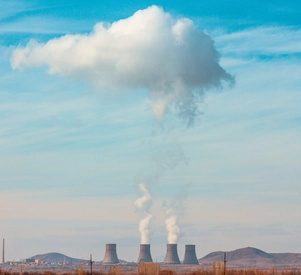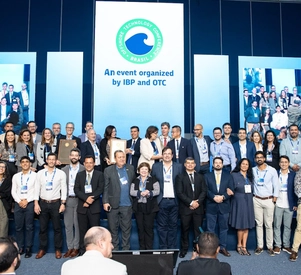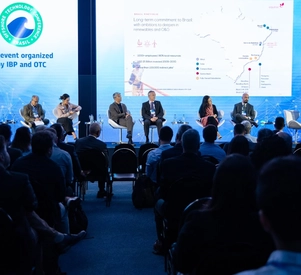Ministry of Ports and Airports Aims to Expand the Role of Waterways in Brazil’s Logistics Matrix
At Rio Pipeline & Logistics on Tuesday (9), a Ministry spokesperson stated that about 20,000 km are currently used for commercial navigation, with potential to reach 42,000 km.
“Today, only 5% of goods transported in Brazil use waterways. We currently explore about 20,000 km for commercial navigation, and we have the potential to reach 42,000 km of navigable waterways,” said Otto Luiz Burlier, Director of the National Secretariat for Waterways and Navigation at the Ministry of Ports and Airports, during the session “Untying Knots: Creating an Attractive Environment to Reduce Logistics Bottlenecks”, on Tuesday (9), at Rio Pipeline & Logistics. He highlighted that waterway concessions will be decisive in offering a package of services, attracting private capital, reducing costs, and decreasing dependence on public resources, with auctions already expected in the first half of 2025.
At the same panel, Ana Mandelli, IBP’s Executive Director of Downstream, stressed the need to ensure legal certainty to enable investments in waterways, especially in the North, where drought hampers navigability and pressures the flow of production from the Midwest.
Elaine Radel, from INFRA S.A., pointed out that logistics planning must be treated as a State policy, with well-structured studies, broad stakeholder participation, and risk mitigation in concessions. Lucas Caetano, partner at Leggio, mentioned opportunities in maritime and pipeline terminals in Paraná and in the multimodal growth of Pará, which combines railway and waterway flows, as paths to increase logistics chain competitiveness.
Pipeline Multimodality to Ease Pressure on Roads and Railways
The integration of pipelines into multimodality projects in Brazil remains a challenge. During the panel “Challenges for Logistics Integration: Exploring Multimodality”, Marcos Ortolan, Business Development Manager at Transpetro, emphasized that a single 10-inch pipeline can transport the equivalent of an MR2 ship, about 45,000 m³ of petroleum derivatives, in just one week. “Pipelines are the invisible backbone of our fluid logistics, capable of relieving roads and railways.”
Vinicius Patel, Director of Port Administration at Porto do Açu, pointed out that the lack of pipeline connectivity limits the capacity for outflow and the attraction of new cargoes. He reminded that Porto do Açu has the world’s largest operating slurry pipeline, transporting 26 million tons of ore per year.
Igor Figueiredo, General Cargo Commercial Director at Rumo, reinforced the need for synergy among modes. “This is not about competition, but integration. Brazil needs all modes working together.”
Regulatory Advances in the Gas Sector
Four years after the enactment of the New Gas Law, Brazil’s natural gas transportation industry is working to unlock investments in the sector. In the panel “Market Opening and Regulatory Advances for the Expansion of the Transportation Network”, the CEOs of the country’s main transporters — Erick Portela Pettendorfer (NTS), Jorge Hijjar (TBG), and Tomaz Guadagnin (TAG) — highlighted the gains from the opening process and the need for legal certainty and a strong regulatory framework.
“We have seen major transformations since 2021, with an exponential increase in the number of contracts, driven by integration among transporters,” said Erick Portela Pettendorfer, CEO of NTS. Jorge Hijjar, CEO of TBG, highlighted biomethane as a new frontier, noting that TBG already has 17 letters of intent from producers interested in injecting renewable gas into the network. Tomaz Guadagnin, CEO of TAG, emphasized the importance of dialogue and strengthening the regulatory model. “We are experiencing a very intense opening process — today we have 400 contracts. But we need to further increase market liquidity.”
Natural Gas: The Energy Transition Fuel
In the session “Natural Gas in Brazil as a Transition Fuel and the Licensing Challenges”, experts discussed investments in gas transportation infrastructure and environmental challenges. Claudia Souza, Executive Manager at ATGás, highlighted the importance of the Coordinated Transportation System Development Plan, which foresees R$ 50 billion in new pipelines, compression stations, and delivery points.
Breno Pantoja, Head of Strategic Studies and Projects Service at INEA, emphasized the need for specific environmental licensing, while Leonardo Teixeira, Environmental Analyst at IBAMA, stressed that the environmental variable must be included at all stages of project development, not only at the end. “This process eliminates bottlenecks and reinforces the climate agenda.” Thomaz Toledo, President of CETESB, reinforced the contribution of natural gas to air quality and pollution control, highlighting challenges regarding deadlines and the capacity of environmental agencies.
About Rio Pipeline & Logistics
Rio Pipeline & Logistics takes place at ExpoRio Cidade Nova from September 9 to 11 and is sponsored by Petrobras (Master), TAG, TBG, and Transpetro (Diamond), NTS and Tenaris (Platinum), TechnipFMC (Gold), Rosen (Silver), and SLB + Enivibes, Solar Turbines, Tory Tech, Energia Latam, and Ecopetrol (Bronze). It also has Strategic Partnership with the Secretariat of Energy and Sea Economy of the State Government of Rio de Janeiro. Institutional supporters include: ABCM, Abegás, AbesPetro, Abimaq, ABICAM, ABRACO, ABTL, AHK, Arpel, ATP, CTDUT, EIC, and Energeo. Media partners include: Eixos, Offshore, Oil & Gas Journal, Petro & Química, PTJ, TN Petróleo, and World Pipelines.




